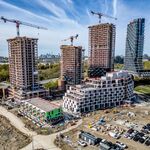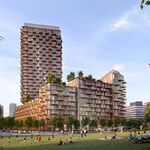ShonTron
Moderator
Member Bio
- Joined
- Apr 24, 2007
- Messages
- 12,457
- Reaction score
- 9,232
- Location
- Ward 13 - Toronto Centre
The Newmarket Sub is the oldest active railway line in Ontario, built in 1853 to Aurora and Barrie and then on to Collingwood, built soon after it got to Barrie (Allandale). It was built to connect Toronto with Lake Simcoe and Lake Huron (Georgian Bay), its original name, after all, was the Ontario, Simcoe & Huron. Like many early railways, it was built to connect to navigable waterways together. Newmarket was at the time, one of the largest settlements in this part of Ontario, so of course this railway diverted to serve it. (Railways depended on financing from business interests along the way, so whoever paid up could influence the railway's route.) The Grand Trunk later bought the OS&H Ry's successor, the Northern Railway of Canada.
The Bala Sub was built much later by the Canadian Northern, which was a competitor to the Grand Trunk and Canadian Pacific. From the outset, the line was built to connect Toronto with Caperol, the junction of its transcontinental network. Apart from Richmond Hill, it didn't get access to the major towns along the way that the Grand Trunk empire did. So it went the other way around Lake Simcoe.
The Bala Sub was built much later by the Canadian Northern, which was a competitor to the Grand Trunk and Canadian Pacific. From the outset, the line was built to connect Toronto with Caperol, the junction of its transcontinental network. Apart from Richmond Hill, it didn't get access to the major towns along the way that the Grand Trunk empire did. So it went the other way around Lake Simcoe.
Last edited:




